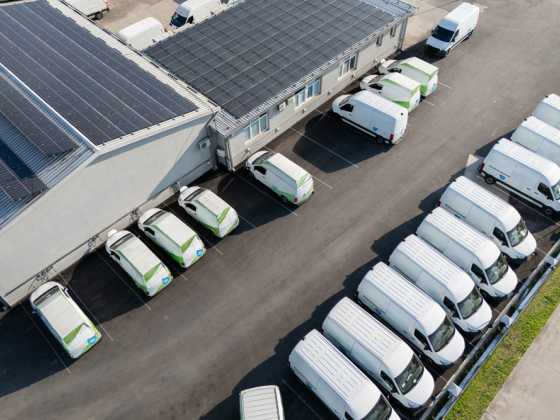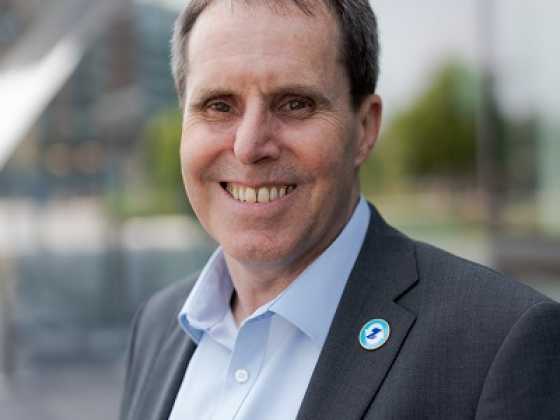An EV charging network to be confident in

The electric vehicle charge point sector has grown massively over the last decade, but there are still some big obstacles to overcome to get the infrastructure we need. That’s why 22 of the major companies responsible for the UK’s charging infrastructure have come together to form ChargeUK. Ian Johnston, chair of the association, explains what they hope to achieve
One of the key shifts that needs to happen for the UK to reach its net zero goals is the transition to electric vehicles. But it’s not just about requiring manufacturers to produce EVs under a ZEV mandate, though that is a significant piece of the puzzle. No, the switch to electric also requires major investment in the public charging infrastructure so that driving an EV will be the best way to get around the UK.
Already, the industry has succeeded in placing the UK at the forefront of the global shift to electric vehicles and has solidified its place as one of the best places in the world to charge an EV, with over 44,000 public EV charging points.
The EV charge point sector has grown massively over the last decade, but there are still some big obstacles that we need to overcome in order to accelerate the rollout of the infrastructure we need. That’s why 22 of the major companies responsible for the UK’s charging infrastructure have come together this year to form ChargeUK.
A pledge to invest
At the time of our launch in April, we announced that our companies have committed over £6bn of investment in this critical infrastructure in the UK to 2030. Together, members of ChargeUK plan to double the number of charge points in the UK this year. And we’re already seeing evidence of the significant ramp-up in charge point installations following the supply chain snags and general obstacles of the pandemic.
And it can go even faster. As the voice of the UK’s EV charging industry, ChargeUK is committed to working with all levels of government to help remove barriers to deployment. We want to help resolve the issues around grid connections, planning permissions, and public funding processes. This is also why we need a strong ZEV mandate. Its strength will determine our confidence to invest in making the UK the best place to run and charge an electric vehicle in the years to 2030.
We also want charging EVs to be easy, reliable and accessible. The SMMT’s data on new car registrations in May 2023 revealed that EVs are more popular than ever – battery electric vehicle registrations have grown by 58.7 per cent year-on-year, now accounting for 17 per cent of the market share.
Confidence in the network
Drivers should be confident that there are enough chargers available and that they won’t be plagued with range anxiety every time they get on the road. Naysayers talk about low ratios of vehicles to chargers and highlight regional disparities – but this isn’t a helpful way to frame things.
The number of public charge points isn’t a helpful metric because more than 80 per cent of EV drivers charge their vehicles at home or at work. As more drivers who don’t have access to off-street parking (i.e., who can’t charge in their driveways or while parked at the workplace) start making the inevitable switch, we’ll definitely need more converted lamp posts, roadside charging and service stations (and elsewhere). But I can guarantee you that they are already on the way.
The most recent figures from, Zapmap – the leading EV charging mapping service and independent authority on electric vehicle infrastructure – show that over 8,000 charge points have come online so far in 2023, with a string of record months for installations through the spring. This is an increase of 35 per cent since this time last year. The rate of charge point installations has increased significantly in 2023, with an average of 1,625 new chargers being installed each month compared to 914 per month across the same period in 2022 and 1115 per month across the whole of 2022.
There was also a significant increase in ultra rapid chargers, which can deliver a full charge in as little as 20 minutes.There are now nearly twice as many rapid and ultra rapid charge points available compared to this time last year.
There has also been a notable increase in both fast chargers, which are often found in car parks or destinations, and slower chargers, that are used in residential streets and workplaces.
According to recent figures, the new charger installation rate is up 75 per cent when comparing with the same period in 2022.
These figures show the huge step-up in deployment of EV charging infrastructure that is underway in 2023, which will give further confidence to those considering making the switch to an electric vehicle.
Removing the barriers
The rate of deployment is increasing month-on-month but we can go much faster with the right policies and help from government to remove the barriers that are currently constraining the roll-out.
Local authorities will play a key role in the rollout. We need more chargers where people have less access to off-street parking; in public places such as libraries and swimming pools and in tourist destinations across the UK.
In addition to pushing for a strong ZEV mandate and removing barriers to installation, ChargeUK has identified four other priority areas: the consumer experience and accessibility; the Rapid Charging Fund; the inclusion of electricity in the Renewable Transport Fuel Obligation; and equalising VAT on public and private charging. All of these priorities are crucial pieces of the EV transition puzzle, and tackling them will enable the EV charging industry to further quicken the pace of deployment.
Alongside these focus areas, we recognise that accessibility and equality remain fundamental building blocks in the fight for Net Zero. Hence, we want to see VAT cut on public charging so that it matches the rate paid by those who are able to charge their EV at home. Currently VAT is 20 per cent on public charging points, as opposed to only five per cent at home, which clearly disadvantages those who are unable to have a charging point at home. Equalising VAT rates is a fairly low cost policy but one that would send a huge message as well as addressing an obvious unfairness.
In order to accelerate the increase in the number of EVs in the UK we need to ensure accessibility and equality regarding their charging points. ChargeUK will continue to work collaboratively with charging operators, consumer groups, and other campaigners to further this important initiative.
We’re thrilled that our industry has now matured to this point. Now it’s time to go further and faster in the race towards net zero. With billions of pounds of investment behind us, we see nothing but opportunity – for job creation, for innovation and for creative solutions.
It’s an exciting time in an exciting industry. ChargeUK members can be proud of what we’ve achieved so far, and of what we are achieving right now and we have much to look forward to in the years ahead.
The EV transition is a crucial pillar for achieving Net Zero, and we’re committed to making it a reality.
Ian Johnston is the chair of ChargeUK, the trade association representing the electric vehicle charging infrastructure industry. He is CEO of Osprey Charging Network.
To learn more about ChargeUK visit chargeuk.org, or follow them on Twitter (@ChargeUK_) and LinkedIn.






